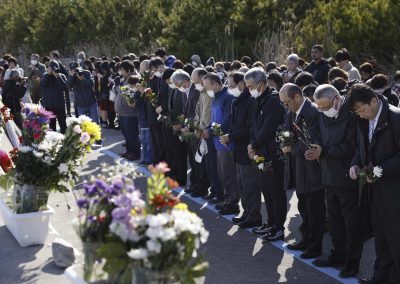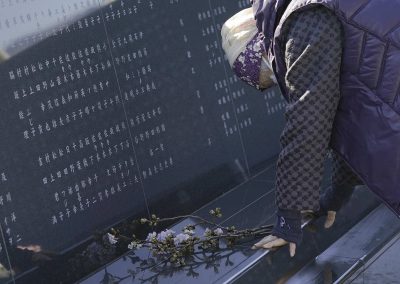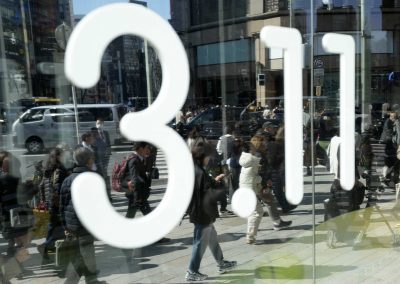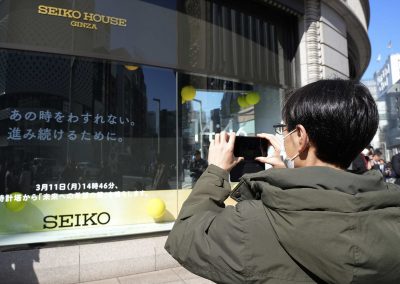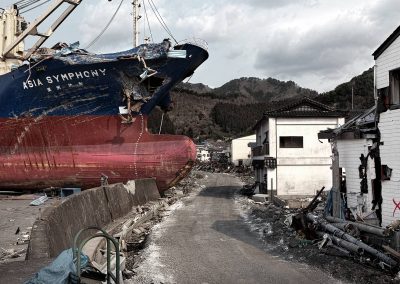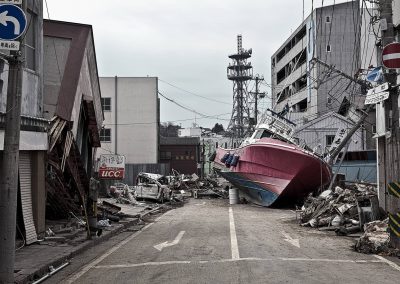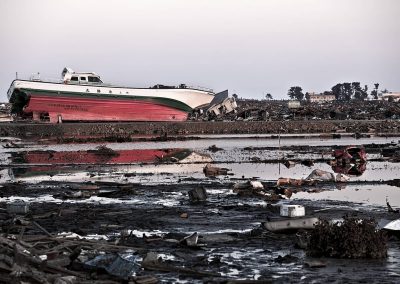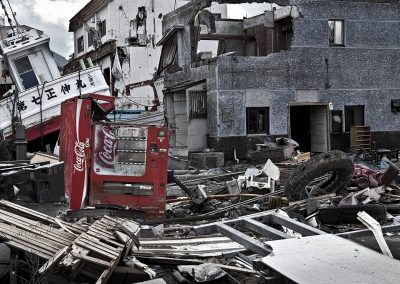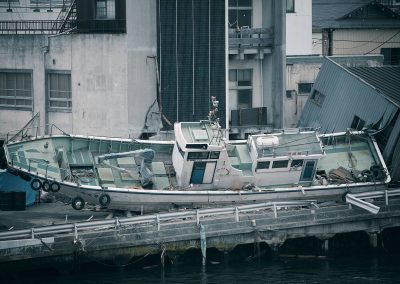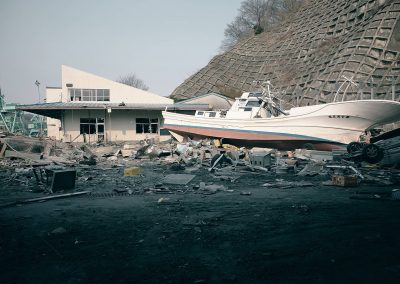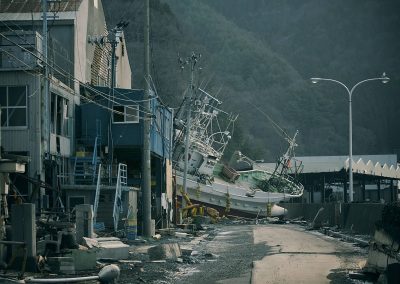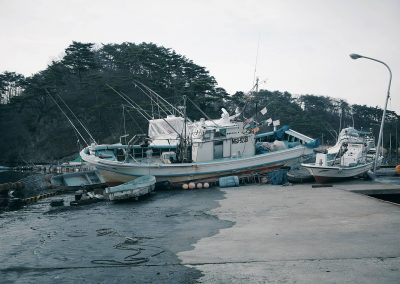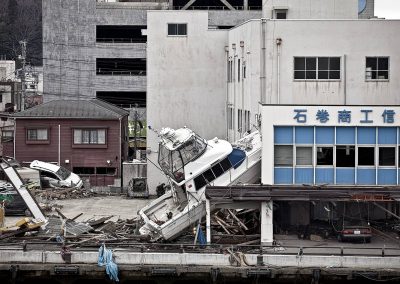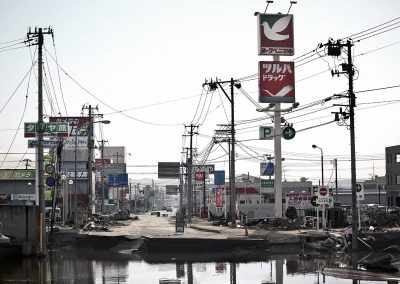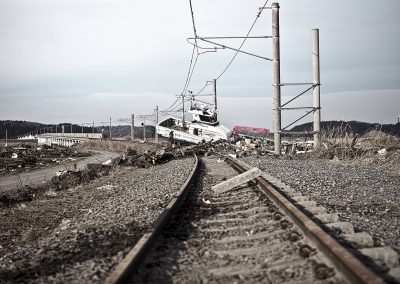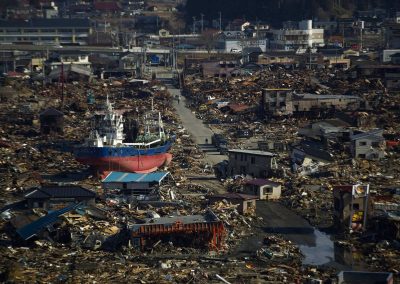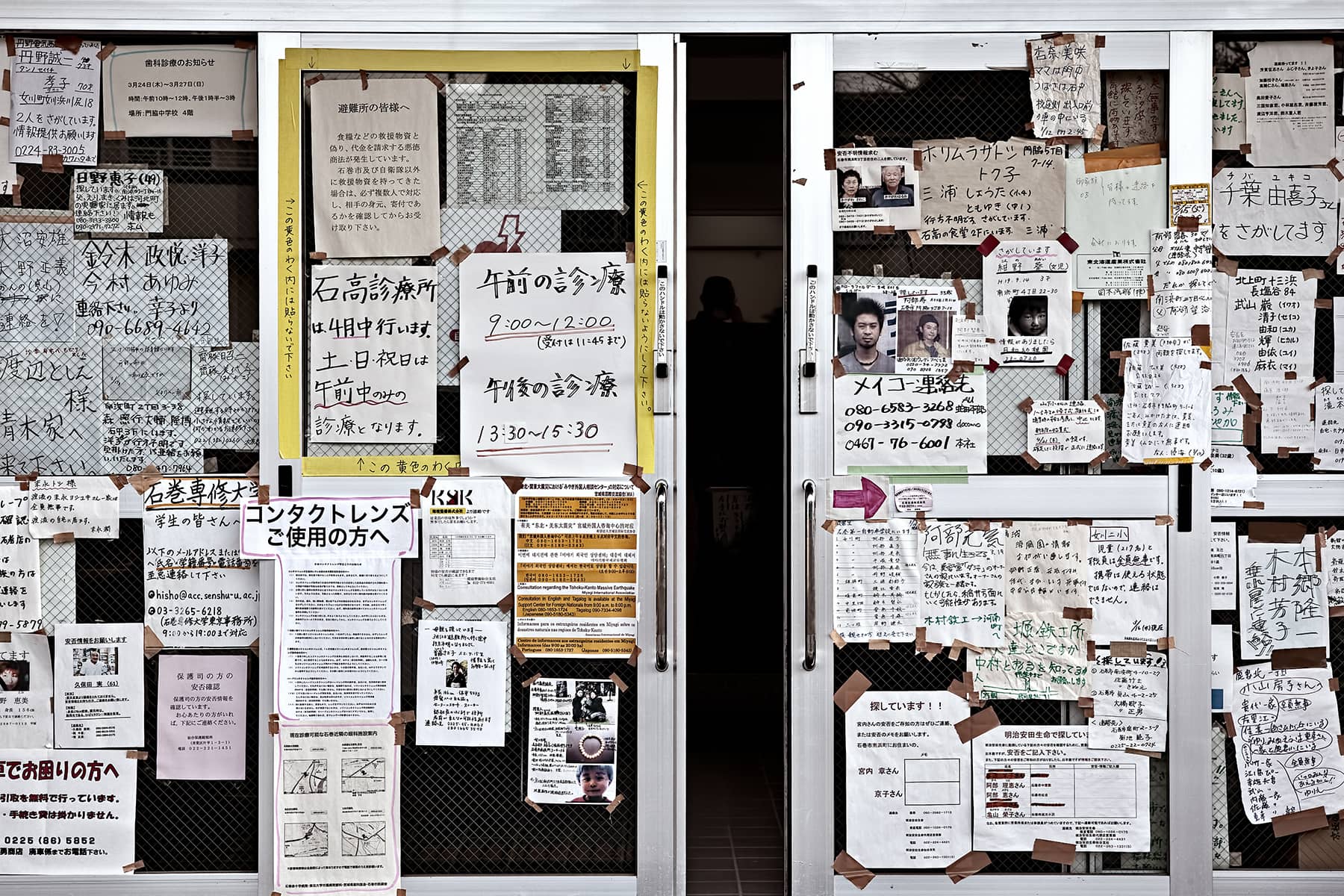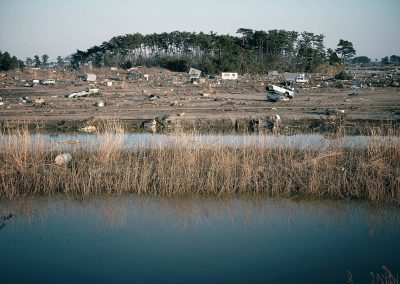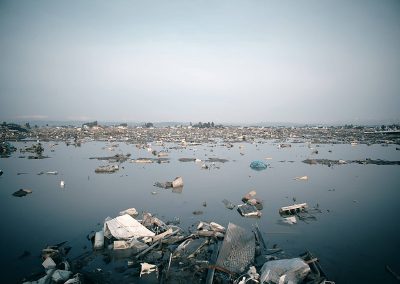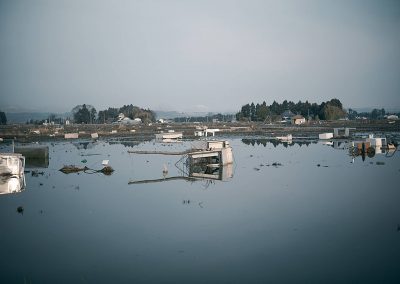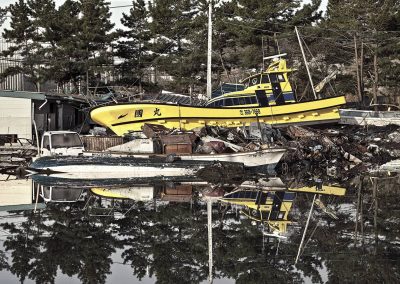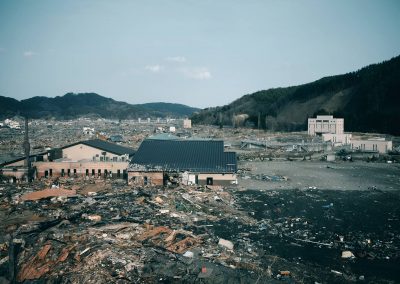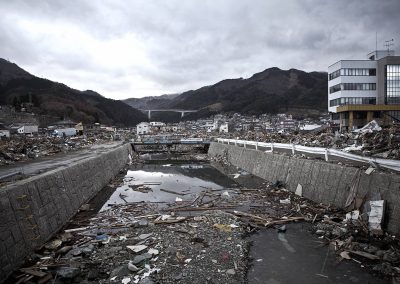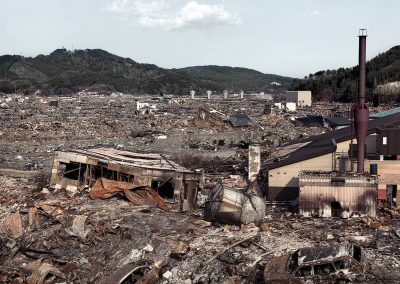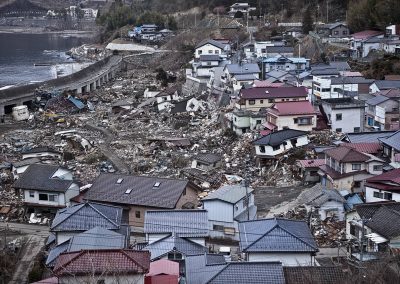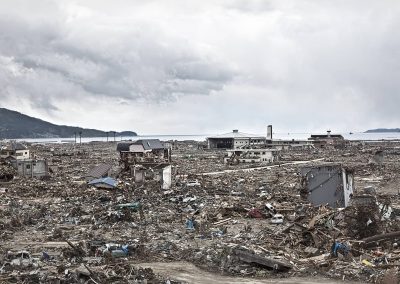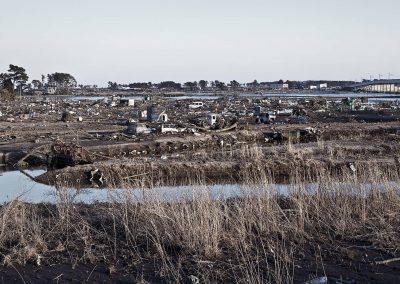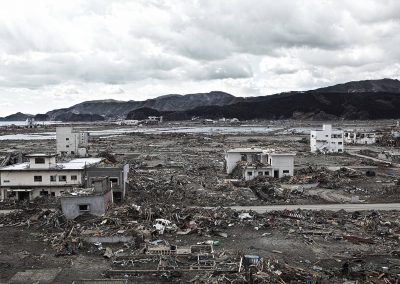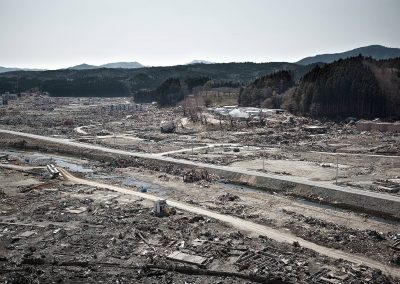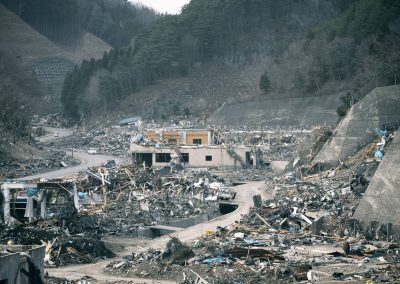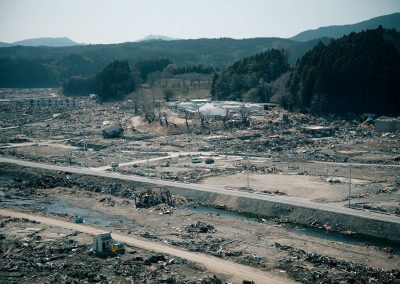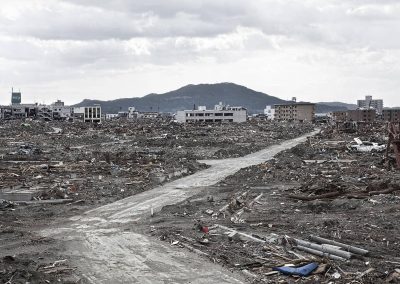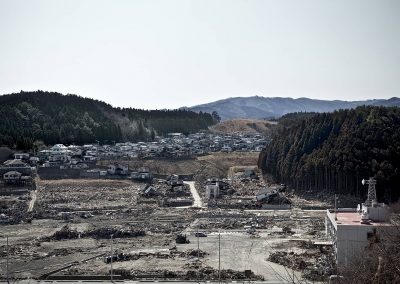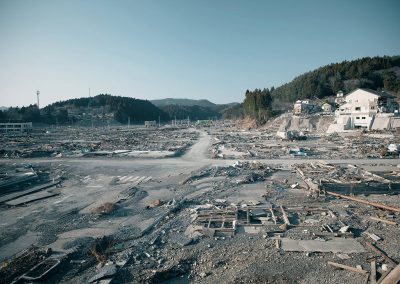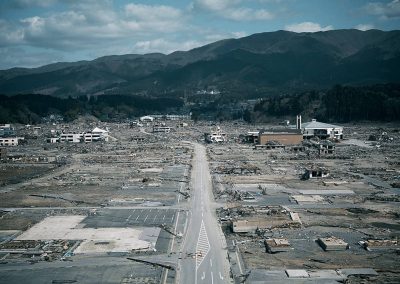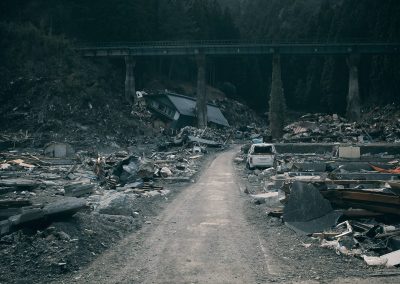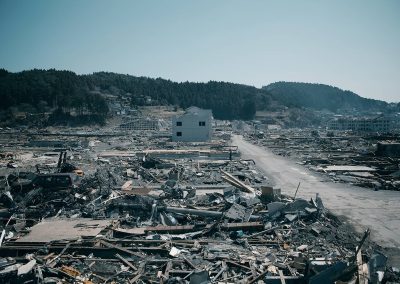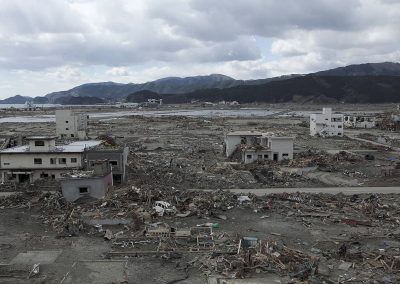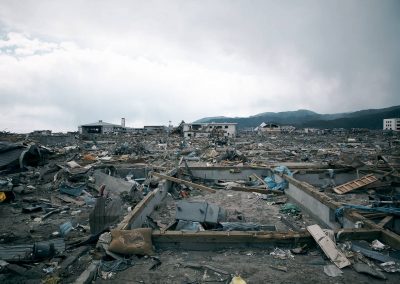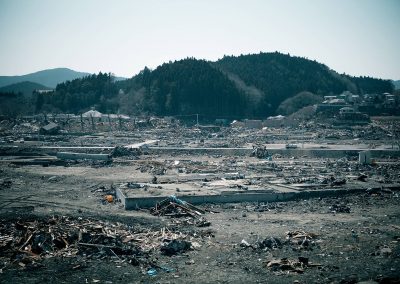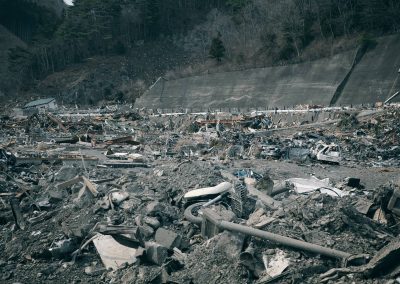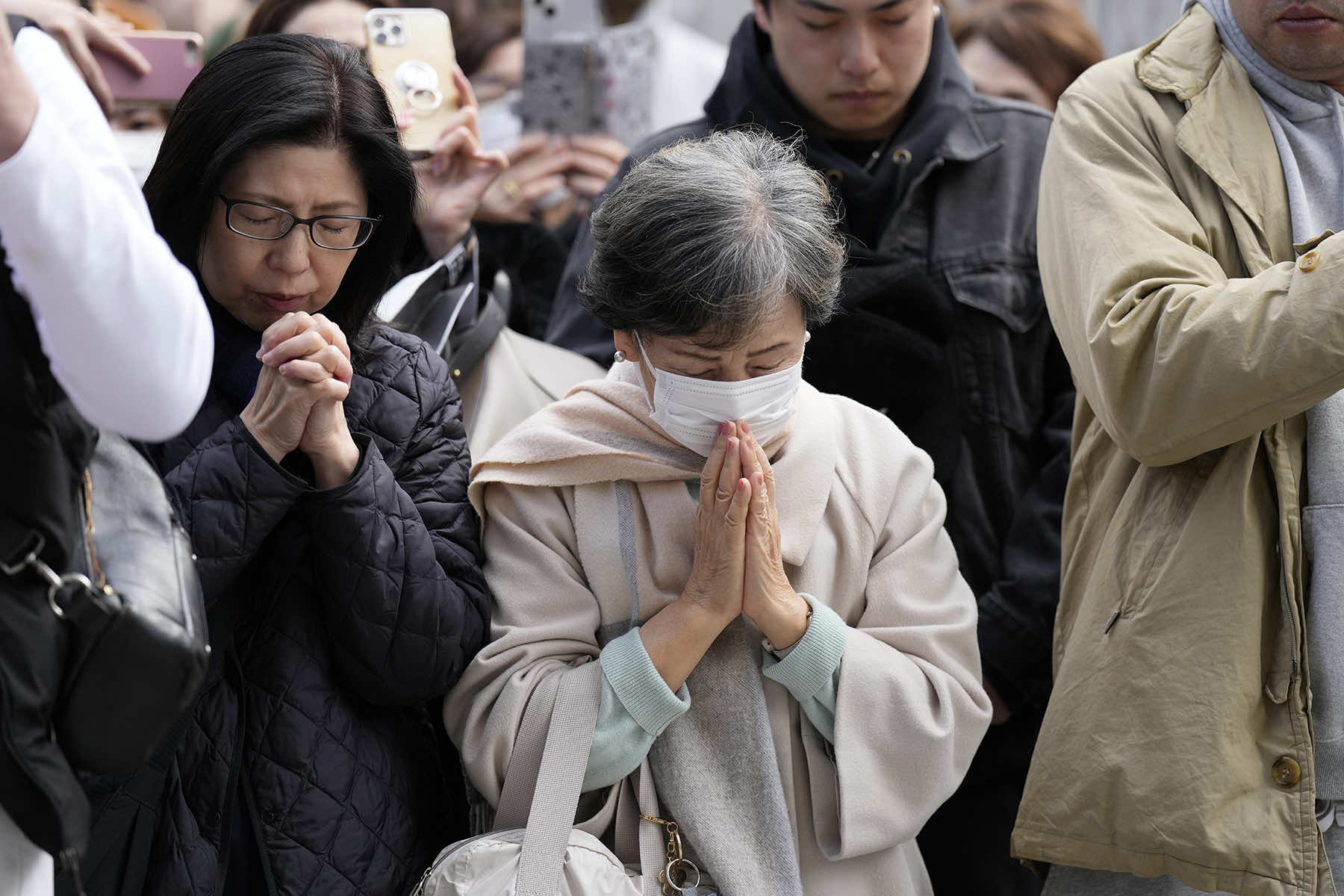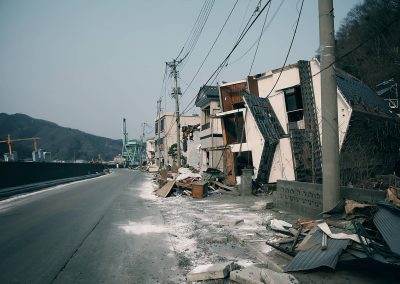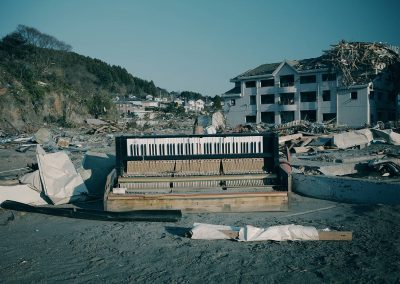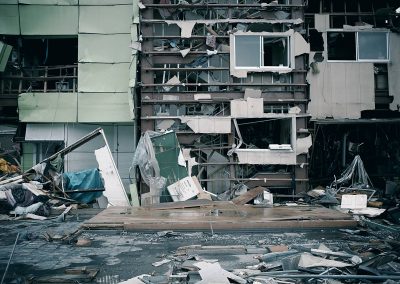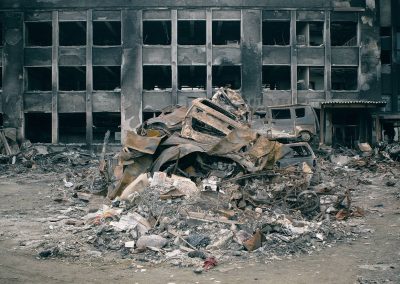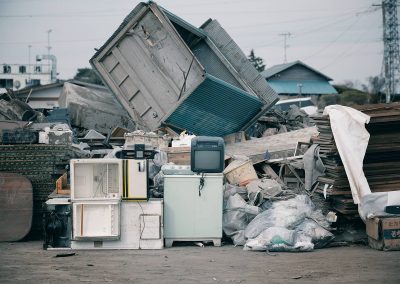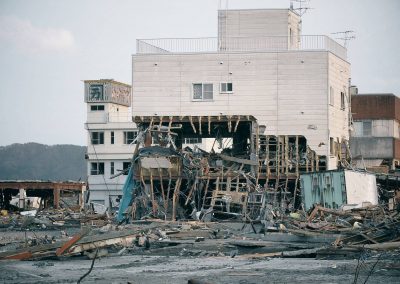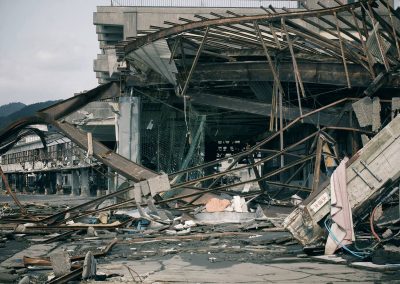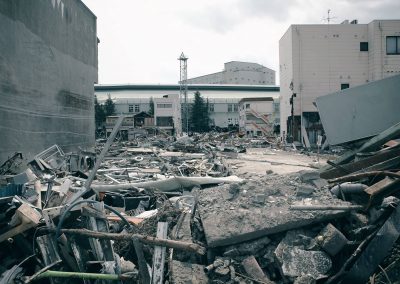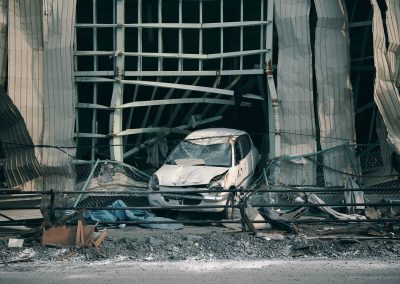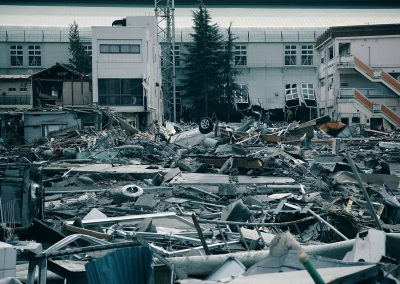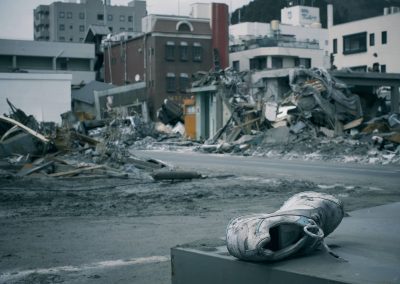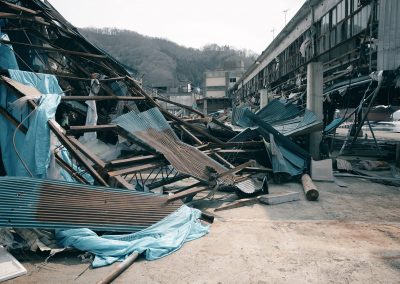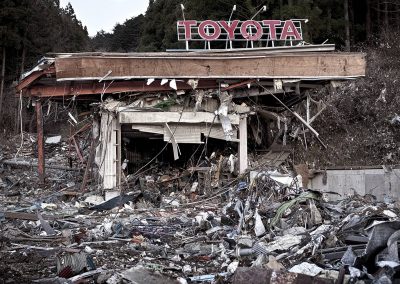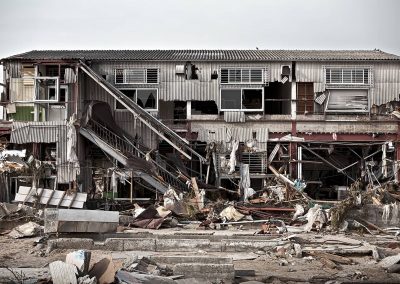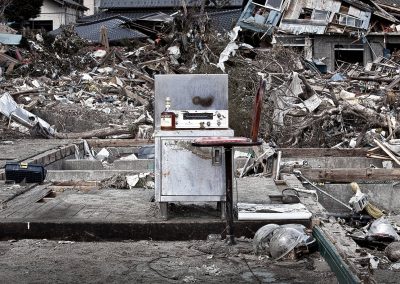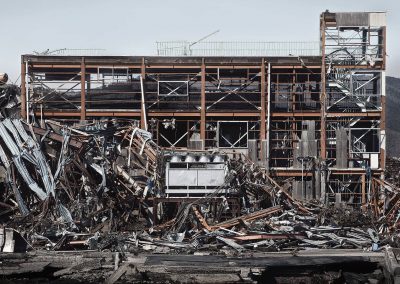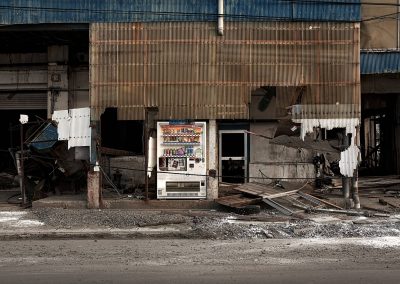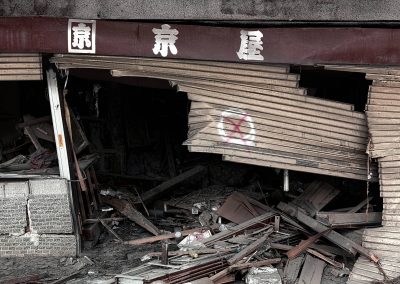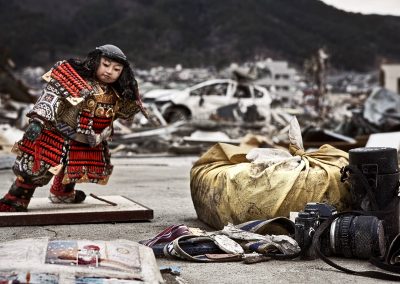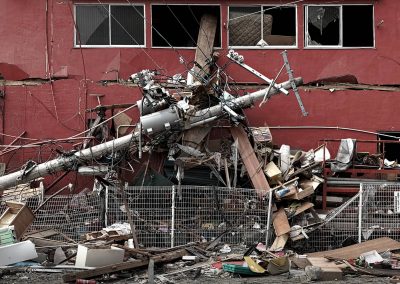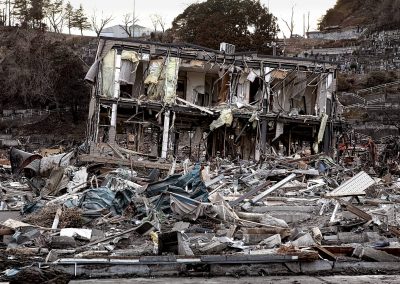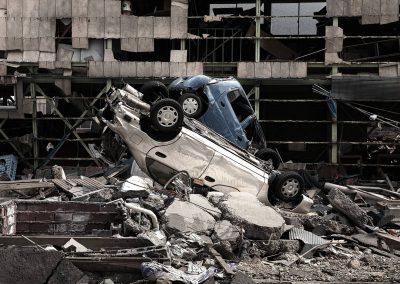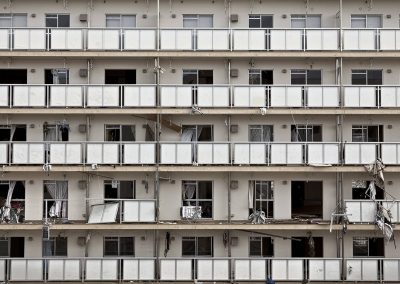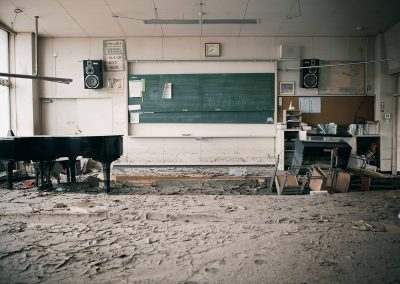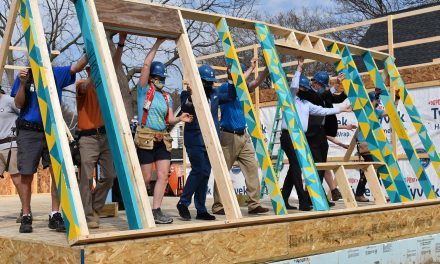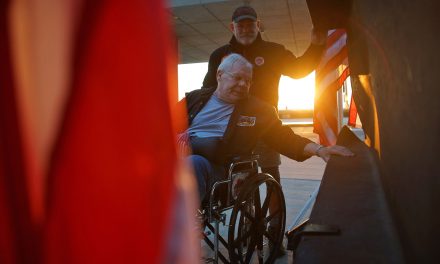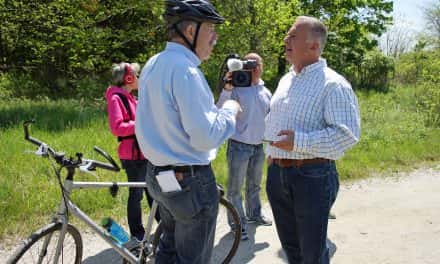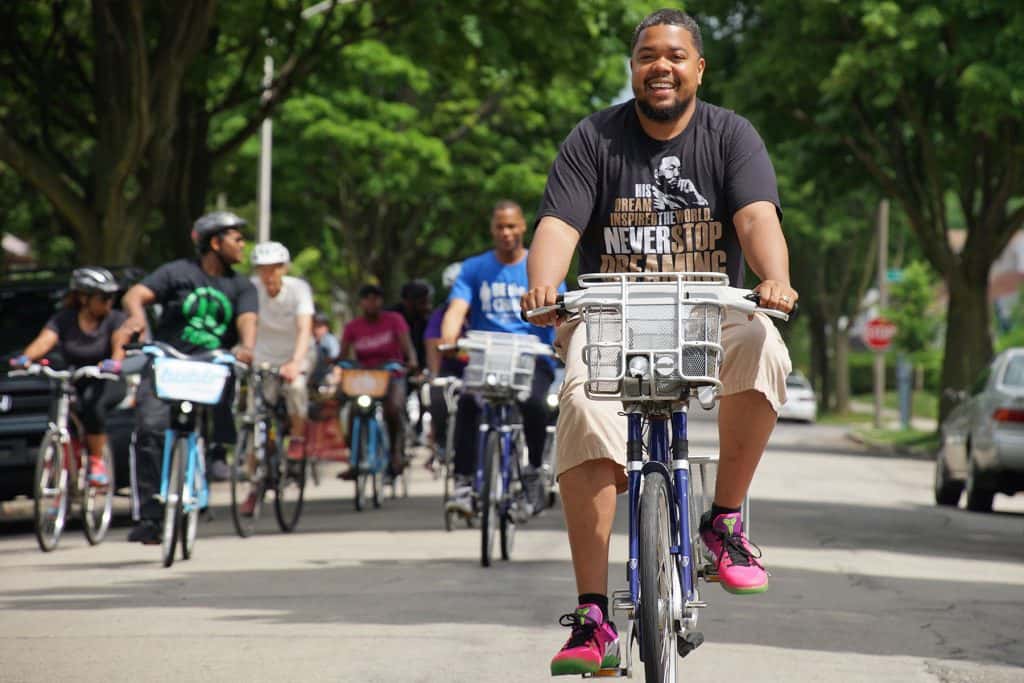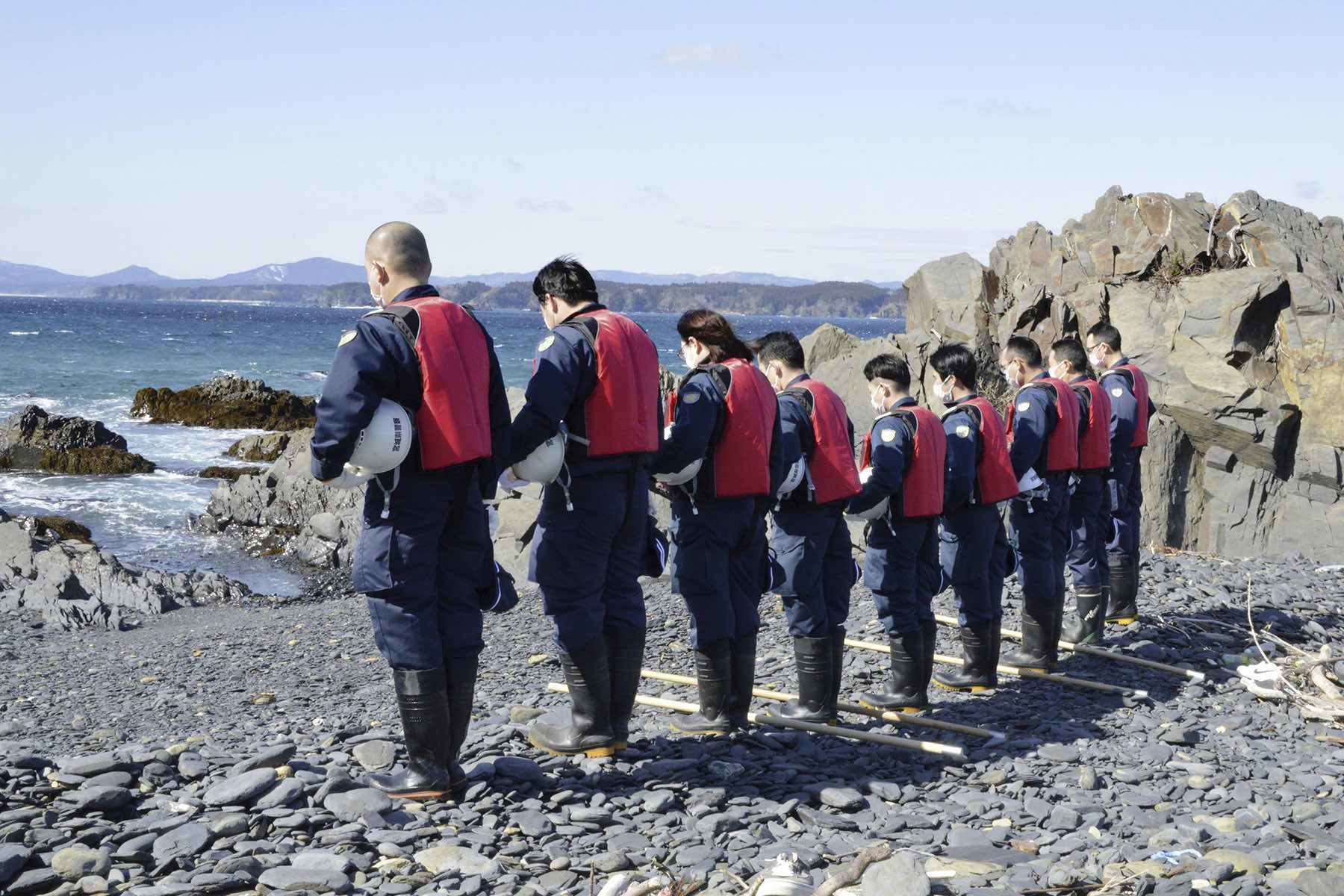
Japan marked the 13th anniversary of the massive earthquake and tsunami that triggered a nuclear meltdown and left large parts of Fukushima prefecture uninhabitable on March 11 with a minute of silence and memorial events, where officials pledged continued support for rebuilding.
The 9.0 magnitude quake and tsunami that ravaged parts of Japan’s northeastern coast on March 11, 2011 killed about 20,000 people and drove thousands from their homes in the prefectures of Miyagi, Iwate, and Fukushima.
At 14:46 — the time when the earthquake struck — people across Japan stopped to observe a minute of silence. In Tokyo’s central Ginza shopping district, people stopped to pray on the sidewalk as a bell rang out, marking the moment.
In the town of Minamisanriku in Miyagi prefecture, a team of 10 uniformed police officers sifted through gravel and sand on the beach in an annual search for the remains of people who are still missing.
Survivors prayed by the bare girders that used to be the town’s disaster prevention center, where dozens died. In the town of Natori, about 400 people prayed and released balloons carrying messages of grief.
In Ishinomaki City in Iwate prefecture, residents gathered in a hilltop park where many of them took shelter 13 years ago, mourning as they stood facing the sea. In Rikuzentakata, about 100 people prayed atop a massive concrete seawall.
And at a ceremony in Fukushima prefecture, where some 20,000 people still cannot return to their homes because of radiation, Governor Masao Uchibori vowed that rebuilding would continue as the decades-long work of cleaning up the nuclear site continued.
“We will not give up,” he said. “I pledge in front of the quake and tsunami victims that we will accomplish recovery at any cost.”
A wall of water over 50 feet tall slammed into the coastal Fukushima Daiichi nuclear power plant, destroying its power supply and cooling systems, triggering meltdowns in three of its six reactors, and spewing radiation across the surrounding areas.
The disaster initially forced more than 160,000 people to leave their homes. Work to remove highly radioactive melted fuel debris has still not begun at the plant, and the overall decommissioning project is expected to last decades.
At the ceremony in Fukushima, Prime Minister Fumio Kishida renewed a pledge that the government would help secure jobs, livelihoods, and the safe decommissioning of the plant so the former residents could return home.
“We will continue to do utmost for the full-fledged recovery and rebirth, as well as the recovery of the northeastern region,” he said.
Most deaths from the tsunami and earthquake took place in Miyagi and Iwate prefectures, north of Fukushima, but they have been able to recover faster because they were not exposed to nuclear waste.
The reconstruction of roads, seawalls, and other infrastructure has been largely completed in Iwate and Miyagi prefectures, but many former residents have not returned due to the loss of communities.
This year’s memorial events also remembered victims of the devastating quake that struck Japan’s north-central region of Noto on January 1, which triggered renewed calls for a review of evacuation plans nationwide, including around nuclear plants.
Kishida later told reporters the government would work to ensure the ruined Fukushima Daiichi plant was decommissioned safely and transparently, citing recent mishaps including a contaminated water leak within the plant complex.
In a step the government and TEPCO said was crucial for decommissioning, the plant started releasing treated radioactive wastewater into the sea last August. The controversial discharges have faced protests by local fishers and neighboring countries — especially China, which has banned Japanese seafood imports.
National memorial services have not been held in Tokyo since the 10th anniversary. Affected municipalities in the disaster-hit areas now individually host local services each year.
3.11 Exploring Fukushima
- Journey to Japan: A photojournalist’s diary from the ruins of Tōhoku 13 years later
- Timeline of Tragedy: A look back at the long struggle since Fukushima's 2011 triple disaster
- New Year's Aftershock: Memories of Fukushima fuels concern for recovery in Noto Peninsula
- Lessons for future generations: Memorial Museum in Futaba marks 13 years since 3.11 Disaster
- In Silence and Solidarity: Japan Remembers the thousands lost to earthquake and tsunami in 2011
- Fukushima's Legacy: Condition of melted nuclear reactors still unclear 13 years after disaster
- Seafood Safety: Profits surge as Japanese consumers rally behind Fukushima's fishing industry
- Radioactive Waste: IAEA confirms water discharge from ruined nuclear plant meets safety standards
- Technical Hurdles for TEPCO: Critics question 2051 deadline for decommissioning Fukushima
- In the shadow of silence: Exploring Fukushima's abandoned lands that remain frozen in time
- Spiral Staircase of Life: Tōhoku museums preserve echoes of March 11 for future generations
- Retracing Our Steps: A review of the project that documented nuclear refugees returning home
- Noriko Abe: Continuing a family legacy of hospitality to guide Minamisanriku's recovery
- Voices of Kataribe: Storytellers share personal accounts of earthquake and tsunami in Tōhoku
- Moai of Minamisanriku: How a bond with Chile forged a learning hub for disaster preparedness
- Focus on the Future: Futaba Project aims to rebuild dreams and repopulate its community
- Junko Yagi: Pioneering a grassroots revival of local businesses in rural Onagawa
- Diving into darkness: The story of Yasuo Takamatsu's search for his missing wife
- Solace and Sake: Chūson-ji Temple and Sekinoichi Shuzo share centuries of tradition in Iwate
- Heartbeat of Miyagi: Community center offers space to engage with Sendai's unyielding spirit
- Unseen Scars: Survivors in Tōhoku reflect on more than a decade of trauma, recovery, and hope
- Running into history: The day Milwaukee Independent stumbled upon a marathon in Tokyo
- Roman Kashpur: Ukrainian war hero conquers Tokyo Marathon 2024 with prosthetic leg
- From Rails to Roads: BRT offers flexible transit solutions for disaster-struck communities
- From Snow to Sakura: Japan’s cherry blossom season feels economic impact of climate change
- Potholes on the Manga Road: Ishinomaki and Kamakura navigate the challenges of anime tourism
- The Ako Incident: Honoring the 47 Ronin’s legendary samurai loyalty at Sengakuji Temple
- "Shōgun" Reimagined: Ambitious TV series updates epic historical drama about feudal Japan
- Enchanting Hollywood: Japanese cinema celebrates Oscar wins by Hayao Miyazaki and Godzilla
- Toxic Tourists: Geisha District in Kyoto cracks down on over-zealous visitors with new rules
- Medieval Healing: "The Tale of Genji" offers insight into mysteries of Japanese medicine
- Aesthetic of Wabi-Sabi: Finding beauty and harmony in the unfinished and imperfect
- Riken Yamamoto: Japanese architect wins Pritzker Prize for community-centric designs
Mari Yamaguchi and MI Staff (Japan)
David Guttenfelder (AP), Eugene Hoshiko (AP), Kyodo News (via AP), and Fly&Dive (via Shutterstock)

